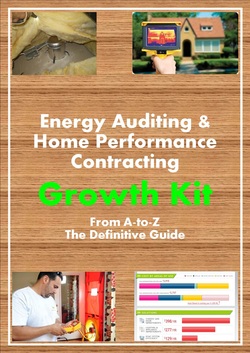Your Online HERS Rater Training Center
FREE HERS RATER PRACTICE EXAMPUT YOUR HOME PERFORMANCE BUSINESS ON ROCKET FUELENERGY AUDITOR NEWSLETTERGet the only Energy Auditor Marketing Newsletter with monthly strategies and tactics to grow your home performance business.
|
Buildings and Their Systems
When talking about good old radiant barriers it is important to keep in mind bigger picture items.
That being said, I've seen way too many roofers and sales people promising the world from radiant barrier. Don't be that guy or gal and find something to sell that is actually going to help someone. Radiant barriers have low emissivity (lower is better) and high reflectivity (higher is better). Radiant barriers should not be installed on the attic floor because once a layer of dust covers the radiant barrier, they no longer work. Radiant barriers should only be installed along the slope of the roof trusses, with at least 1" of clearance between the plywood and the barrier for it to breath. According to the Department of Energy (DOE), a product classified as a “radiant barrier” must have a high reflectance of at least 90% and a low emittance of 10% or less. Radiant barrier paints, do not meet that criteria with a reflectance of only 75%. Next Section2a. Building Components
2b. Conservation Strategies
2c. Comprehensive Building Assessment Process
2d. Design considerations
|


